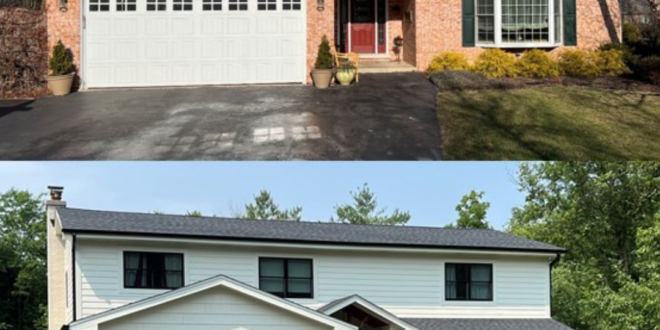One great approach to update the appearance of the walls of your house, either inside or outside is brick staining. Brick stain penetrates the surface unlike painting, letting the brick’s inherent grain come through while introducing a fresh color. Here’s a thorough instruction on getting a professional-looking finish if you’re thinking about a do-it-yourself brick staining job.
A Knowledge of Brick Staining
What is Brick Staining?
Brick staining is tumbling a transparent, pigmented substance over brick surfaces. More naturally occurring and long-lasting color change results from the stain seeping into the porous substrate than from paint. This technique can greatly improve the brick’s visual attractiveness and help to keep its texture.
Why Choose Brick Stain Instead of Paint?
Brick stain lets the original patterns and textures show while paint lays a solid layer over the brick. Furthermore more suited to the surface of the brick, stain provides superior lifetime and resistance against chipping or peeling. Furthermore flexible for many projects, stain can be used on both new and existing masonry.
Getting Ready for Your Brick Staining Project
Organize Your Resources
Check that you have what you need before you begin staining. You will have:
- Brick stain: make sure it’s suitable for your kind of brick
- Rollers or brushes (greater penetration is advised with a masonry brush)
- Painters’ tape
- Plastic sheeting or drop towels
- If the stain calls for it, a mixing bucket
- a ladder to access high places
- Safety gear include a mask, gloves, and goggles
Clear the Brick Surface
A good staining job depends on careful preparation. Start by giving the block careful cleaning. Using a wire brush or pressure washer, clear debris, grime, and any old paint or sealant. Before applying the stain, let the brick thoroughly dry.
Utilizing Brick Stain
Test a Small Area First
Test the brick stain on a small, covert area first before pledging to the whole project. This will guarantee correct adherence of the stain and enable you to estimate the final hue. Should it be necessary, it’s also a great chance to change the application method.
Apply the Even Stain
Working in little areas, apply the stain with a masonry brush or roller. Apply the stain consistently, even to prevent streaks and patches. Working your way down from the top of the wall, start to prevent drips and unequal coloring. Refer to product directions on coat count and drying periods for optimum results.
Combine and Seal
To guarantee a smooth, consistent look as you apply the stain, mix every section into the next. Consider overlapping parts to prevent obvious lines or color variances. When the stain dries, check the surface and, if needed, apply a second coat.

Common Issue Troubleshooting
What if my Brick Stain Appears Patchy?
Should your brick stain seem uneven or spotty, inadequate mixing or application may be the cause. To fix this, gently sand the impacted parts then coat them again with stain and mix it with the surrounding sections. To prevent discrepancies, guarantee complete stain mixing before application.
How Can I Prevent Stain from Peeling?
Prevention of peeling depends mostly on appropriate surface preparation. Before staining the brick, make sure it is dry and clean. Furthermore avoid applying the stain in very hot or cold conditions since this will influence its endurance and adhesiveness.
Maintenance and Care
How to keep stained brick looking good?
Stained brick surfaces require fairly little care. To get dust and debris off the brick, routinely wash it with a light detergent and water. Steer clear of abrasive cleansers or strong chemicals that could discolor the brick or stain.
When to Reapply Brick Stain
Brick stain typically lasts for several years, but its longevity can be influenced by weather conditions and the quality of the initial application. Inspect your brickwork periodically for signs of fading or wear. If necessary, you can reapply a fresh coat of stain to restore its appearance.
FAQs
Could I apply any kind of stain on the brick?
Not every stain works for brick. Make sure you employ a product meant especially for masonry surfaces. Better adherence and a more robust finish will follow from this.
How long does brick stain take to dry?
Environmental factors and the substance used will affect the drying times. Brick stains usually dry in 24 to 48 hours. For particular drying times and recommendations, always refer to the manufacturer’s directions.

Conclusion
One fulfilling project that improves the visual attractiveness of your house is do-it-yourself brick staining. Following these basic guidelines—correct surface preparation, consistent stain application, and preservation of the final appearance—you will produce work of professional quality. Brick staining is a long-lasting and aesthetically pleasing solution whether you’re modernizing the front of your house or renewing an ancient brick wall.
 Personal Finance and Attractive Interest Rates Unlock Smart Savings with Low Rates and Expert Financial Tips
Personal Finance and Attractive Interest Rates Unlock Smart Savings with Low Rates and Expert Financial Tips







